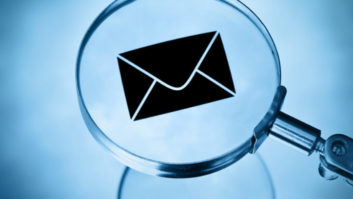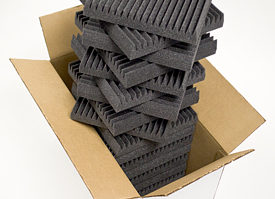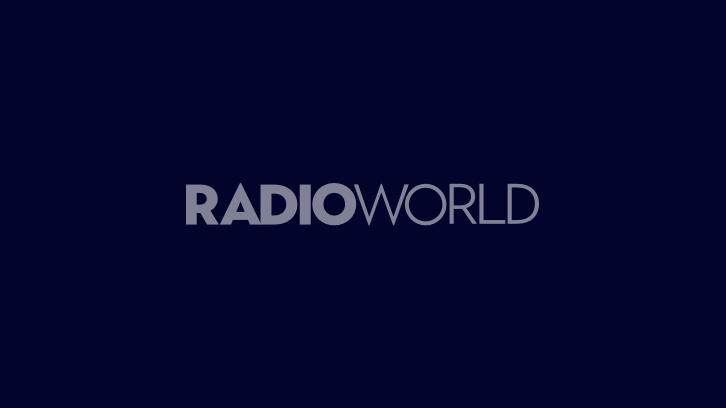In this letter to the editor, the author responds to Alan Hughes’ article “The Modernization of Broadcast Radio.” Radio World welcomes letters to the editor on this or any story. Email [email protected].
This is in response to Alan Hughes’ editorial published by Radio World on April 6, 2025, proclaiming that the United States should embrace DRM (Digital Radio Mondiale). He points out that FM is nearly 100 years old and AM is older than that, starting here in the 1920s. Plus, he says the U.S. hasn’t modernized broadcasting (towards digital), which is not true.
The U.S. has digitized officially in 2002 with the approval of HD Radio technology, which can be used both on the AM and FM bands. Today there are about 3,000 HD Radio stations and over 110 million cars with HD Radio receivers in the U.S. alone. HD Radio is also in Canada and Mexico.
During the mid-2000s I was on the DRM Consortium Steering Committee, so I have a bit of knowledge of DRM. Plus, I was also international sales director for iBiquity (the developer of HD Radio) for a number of years prior to my association with DRM, so I have some knowledge of HD Radio technology as well.
A great deal of Mr. Hughes’ article is about DAB/DAB+ which is a different system than DRM. DAB+ has traction in Australia as well as a good portion of Europe, so we will write that off as being moot in our discussion here since his premise is that the U.S. should adopt DRM.
DAB (the old Eureka 147 project) was first endorsed and then later rejected as a possible standard in the U.S. due to lack of available spectrum back in the 1990s as the technology was being developed in Europe.
DRM comes in two flavors. It used to be DRM and DRM+, with the former for long wave, medium wave and shortwave — the latter being primarily for the FM Band II initially. But in reality, it can be on Band I (low band VHF) or Band III (high band VHF). However, the DRM Consortium later elected to just brand it as DRM.
DRM originally was conceived to digitize shortwave broadcasts and greatly improve audio quality. It does do this. It also can pack a number of features such as limited data transmission and early warning for weather alerts, program guide and even some slow-scan video where bandwidth is available.
Unlike HD Radio broadcasting, DRM can adjust transmission bandwidth to suit the situation. While considered an “open standard” rather than proprietary such as the HD Radio system, there is a patent pool and royalties are due for receivers and transmission manufacturing, so it’s not a free system from a monetary standpoint. It’s also considerably more expensive to deploy than just regular AM or FM broadcasting due to the additional equipment required.
Let’s examine AM radio vs. DRM as it might replace AM radio in the medium wave band (530-1700 kHz). Why is there an effort to keep AM radio in all cars and how is it a safety measure? AM radio is very simple to put on the air in an emergency, say after severe earthquakes, flooding, hurricanes, wildfires, etc. A simple transmitter and temporary wire antenna are quick and easy to install and broadcast. DRM, not so simple.
Additional equipment such as a content server and modulator are needed and setup is more complex. Plus, DRM receivers would be needed. There are basically no DRM receivers in the U.S. except for some shortwave hobbyists, and this is actually the DRM Consortium’s largest challenge — getting receivers in the hands of the public. Existing radios are ubiquitous.
The U.S. government through FEMA and the FCC EAS system provide PEP (Primary Entry Point) stations which serve very large geographical areas. These are capable of relaying presidential messages, state and local emergency operations center messages, etc. These PEP stations are almost universally AM stations, often very high power (50 kw).
FM receivers are also ubiquitous in the U.S. FM transmitting antennas need height in order to have decent coverage, which AM antennas do not. After the floods in North Carolina following Hurricane Helene, an AM station stood out in terms of outstanding local, emergency coverage. This has been the case in nearly every major disaster.
[Related: “How iHeart’s WWNC Has Covered Helene and Its Aftermath“]
Mr. Hughes suggests we open up Band I (TV channels 2-6) for DRM. This has already been asked and denied by the FCC some years ago. There is little reason to assume the commission has or will change its mind.
From a business standpoint, there seems to be too many radio stations on the air already. Adding another band and more stations would not be conducive to growing the broadcast business. Yes, you could sunset the AM band and move every station on AM to DRM on Band I, but this would also create a double-problem: Receivers do not exist for radio on Band I. Plus, DRM doesn’t exist here. We also face the possibility of ATSC 3.0 having the equivalent of radio broadcasts.
In 2002 the FCC made the decision to authorize HD Radio as the digital standard in this country. HD Radio broadcasting may not be the success many have hoped for, but it is here, I have it in my car as well as in my home office and it does work. Given that this digital standard is already established, I would suspect a great deal of pushback from broadcasters who have made the considerable financial investment in the HD Radio gear as well as the regulators at the FCC to open another digital standard in this county. I say that, realizing a number of AM stations have turned off their AM HD Radio system, but others have more recently turned it on.
Mr. Hughes suggests that this be a mandate. Digital radio has never been a mandate here. A few times some people tried (unsuccessfully) for a mandate that FM had to be in every receiver (now we have the reverse!). Not many people seem to be in favor of such a mandate. There is little to gain from it. In Europe, where broadcasters were operating AM/FM and DAB/DAB+ signals in totally different bands, there was a cost benefit to sunsetting analog AM/FM broadcasts, but clearly that is not the case in the U.S.
The United States is geographically huge and diverse. Many European countries that have DAB are smaller than many of our states. DRM? There is no DRM on AM/FM bands in Europe.
Mr. Hughes correctly points out that DRM is a world-wide standard (adopted by the ITU), but, in reality, it has very limited rollout outside of shortwave broadcasting. India is the only country using DRM on medium wave and some on the FM Band II, save a technology demonstration here or there elsewhere. We cannot consider DRM to be anything close to ubiquitous in other parts of the world for comparison. But it is important to know that those countries that sunset AM/FM broadcasting set up DAB broadcasting as their primary broadcast medium, they are, to this point, relatively small countries, and all by government mandate. It also is true that the largest geographical county to embrace digital broadcasting with DAB+ is Australia. There is no way to cover their “outback” with DAB+, so standard FM and AM broadcasting continues there with no plans to sunset.
If anything, DAB/DAB+ is a far more successful system, although DRM looks excellent on paper. In case you are wondering, the only difference is the CODEC. DAB uses the older MP2 while DAB+ uses HE-AAC V2. Thus, more audio channels can be on the DAB+ multiplex since the CODEC is more efficient. DAB receivers do not decode DAB+ but DAB+ receivers can decode DAB.
Mr. Hughes states that when hybrid analog/digital broadcasts are in the same band, the digital signal has to be limited, reducing coverage. With the present -14 dBc that the FCC authorized back in 2010 (up from -20 dBc, initially) proved to virtually replicate the protected analog coverage contour. Later, -10 dBc and asymmetrical sidebands increase coverage to beyond the analog protected contours. It should be noted that most stations in the U.S. are interference limited by other co or adjacent channel stations.
All of this being said, there are some advantages for digital broadcasting, and we have embraced these. HD Radio technology enhancements show album art, station logos, client logos and text. DTS AutoStage is permitting analog AM/FM stations to present station logos on capable receivers, and more and more of those are now compatible. Quu is working to enhance data on auto displays for both analog and HD Radio transmissions. U.S. Radio is not rotting on the vine, they are doing more and more to be competitive on the auto dashboard.
We have heard people in the past express interest and suggest the FCC permit DRM here. It has not happened, and I can’t see it happening. It is not going to advance the industry and it will only cause us to go the way of AM stereo by having competing standards until there are none, as happened with AM stereo.
[Sign Up for Radio World’s SmartBrief Newsletter]
*Editor’s note: The text has been updated to correct the number of stations transmitting in HD Radio in the U.S.



